Do sixth-grade social studies lessons about the Paleolithic and Neolithic Age have a STEM component? Yes, they do!
Joanna Browning’s and Kaitlin Santo’s sixth-grade social studies students recently completed the Great Stone Age STEM project, a group project using science-technology-engineering-math skills to support their newly acquired knowledge about this time in history. It’s another example of the creativeness used by all Minisink Valley faculty to design and offer cross-curricular lessons when possible.
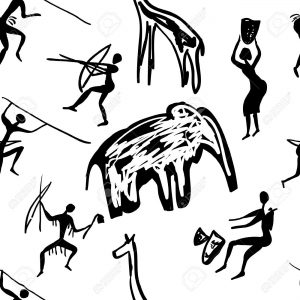 The Paleolithic Era (or Old Stone Age) is a period of prehistory from about 2.6 million years ago to around 10,000 years ago. The Neolithic Era (or New Stone Age) began around 10,000 B.C. and ended between 4500 B.C. and 2000 B.C. in various parts of the world.
The Paleolithic Era (or Old Stone Age) is a period of prehistory from about 2.6 million years ago to around 10,000 years ago. The Neolithic Era (or New Stone Age) began around 10,000 B.C. and ended between 4500 B.C. and 2000 B.C. in various parts of the world.
The main difference between Paleolithic and Neolithic age is that Paleolithic age is marked by the hunter/gatherer lifestyle and the use of stone tools while Neolithic age is marked by the domestication of animals and development of agriculture.
Students worked together in groups to complete their projects which focused on the story of a clan of Paleolithic hunter-gatherers whose cave was destroyed in an earthquake.
Different groups focused on different work:
Designing and building a digging tool that can scoop and lift dirt
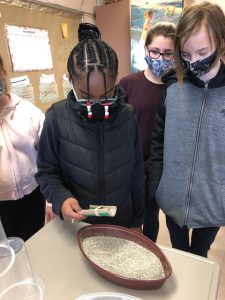
Designing and building a basket that will hold weight
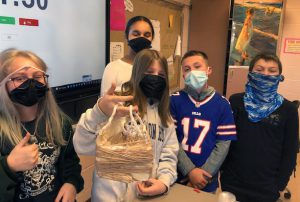
Designing and building a working bow and arrow
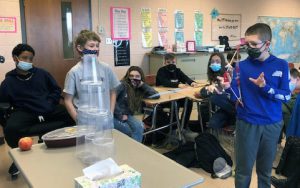
Designing and building an ax that can successfully cut wood
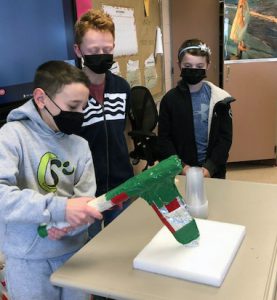
Designing and building a waterproof cooking pot with a stand
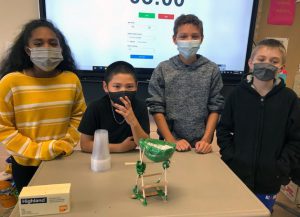
As they learned in social studies class, these are tools similar to the ones used during that time in history. But unlike the Paleolithic hunter-gatherers, students applied science and engineering practices and their understanding about the nature of science to bring their tools to life.
Parents helped by donating the supplies that would be needed, including: popsicle sticks, straws, foil, plastic wrap, string, yarn, glue sticks, tape, pipe cleaners, rubber bands, cardboard tubes and more.
Over several class sessions, the groups worked on the creating their “real-life, purposeful” tools. Afterward, each group presented their tool to their peers, giving them an opportunity to refine their presentation skills, and tested it in front of the class to see if it met the requirements and test needed to verify it was created successfully.
“The students worked as a team to solve a problem presented to them by creating a tool using only materials supplied,” explained Mrs. Browning. “It was a great team building activity on so many levels. They did an outstanding job while cooperating with each other and brainstorming ideas to solve a problem presented to them within parameters given.”
See more photos on the district’s Facebook page.
